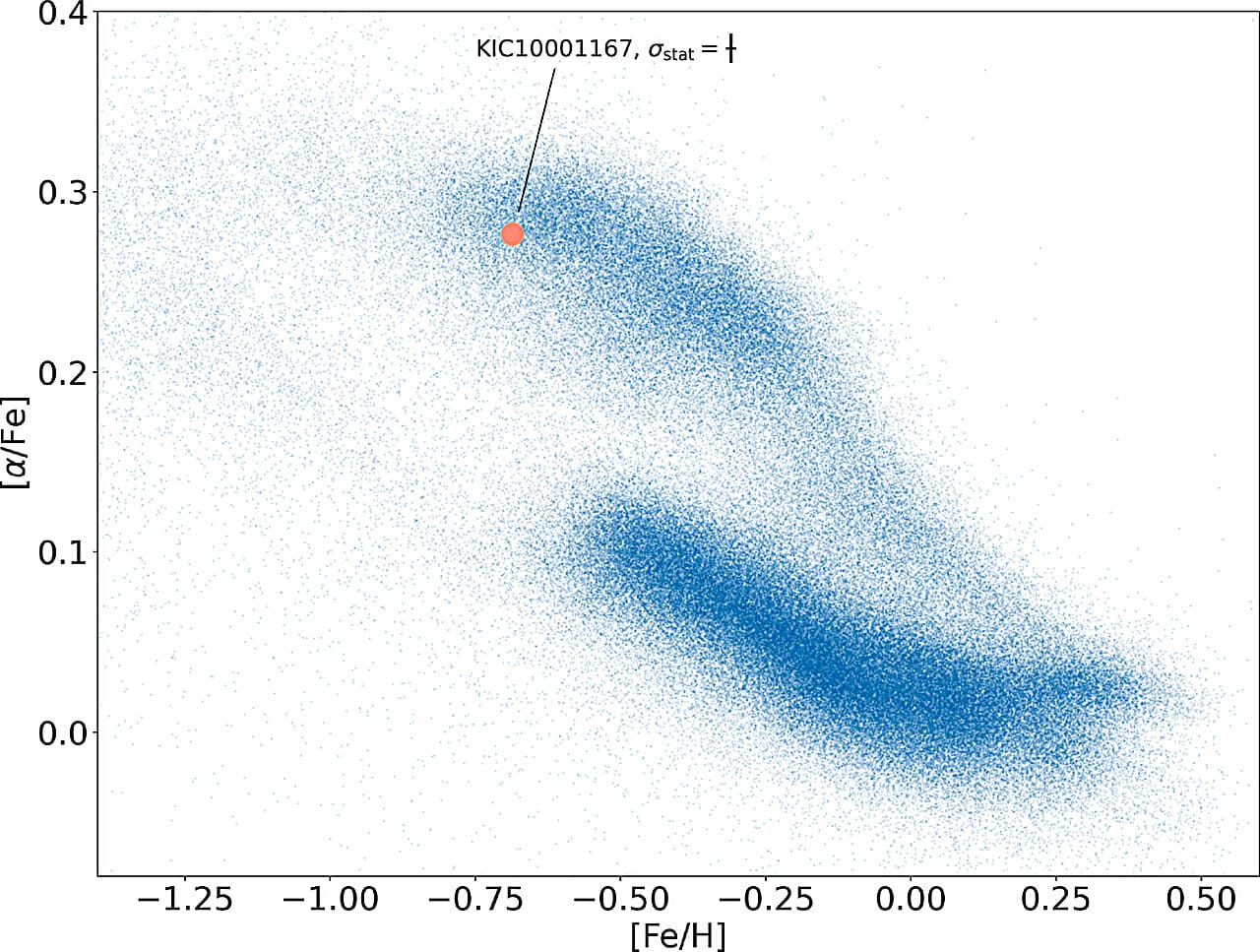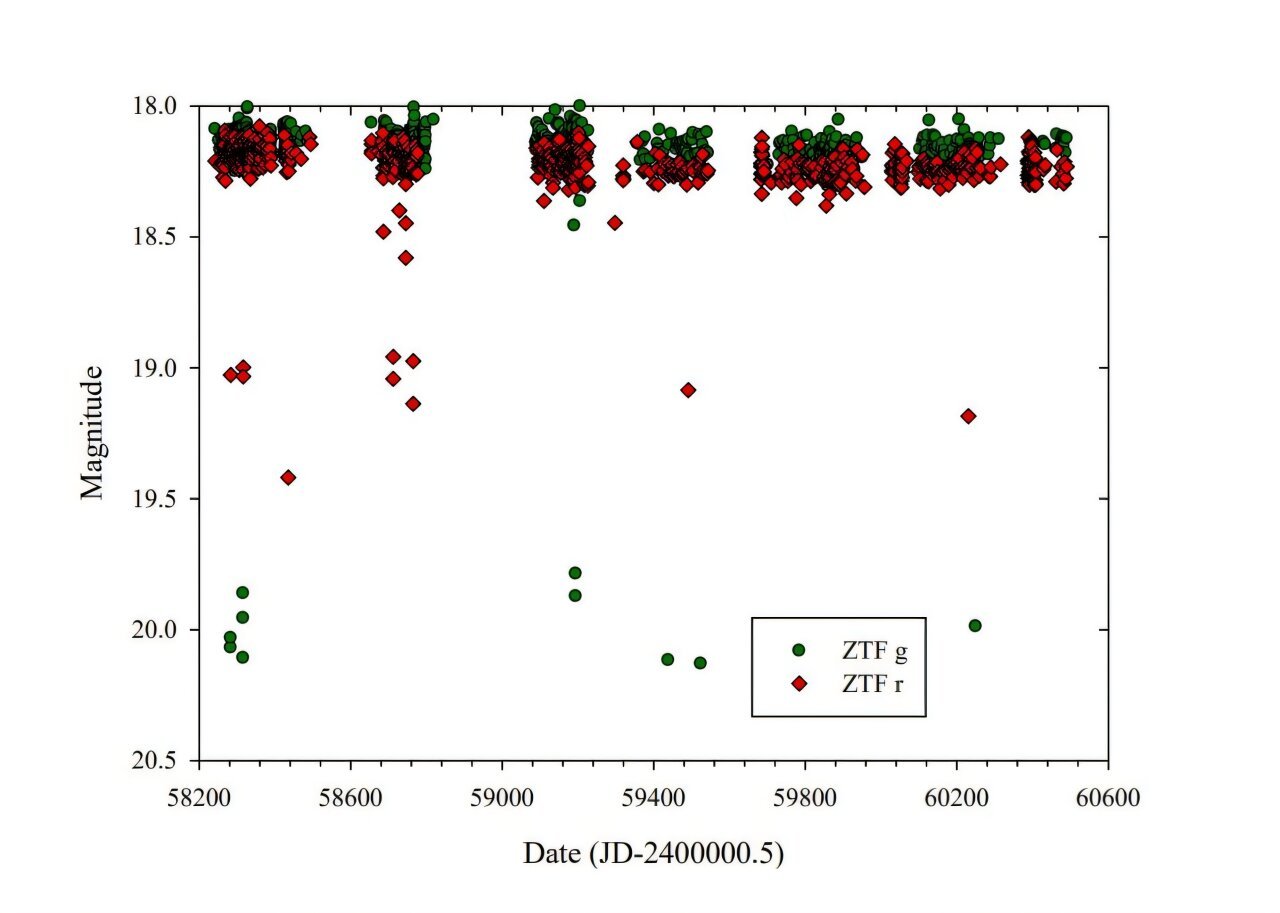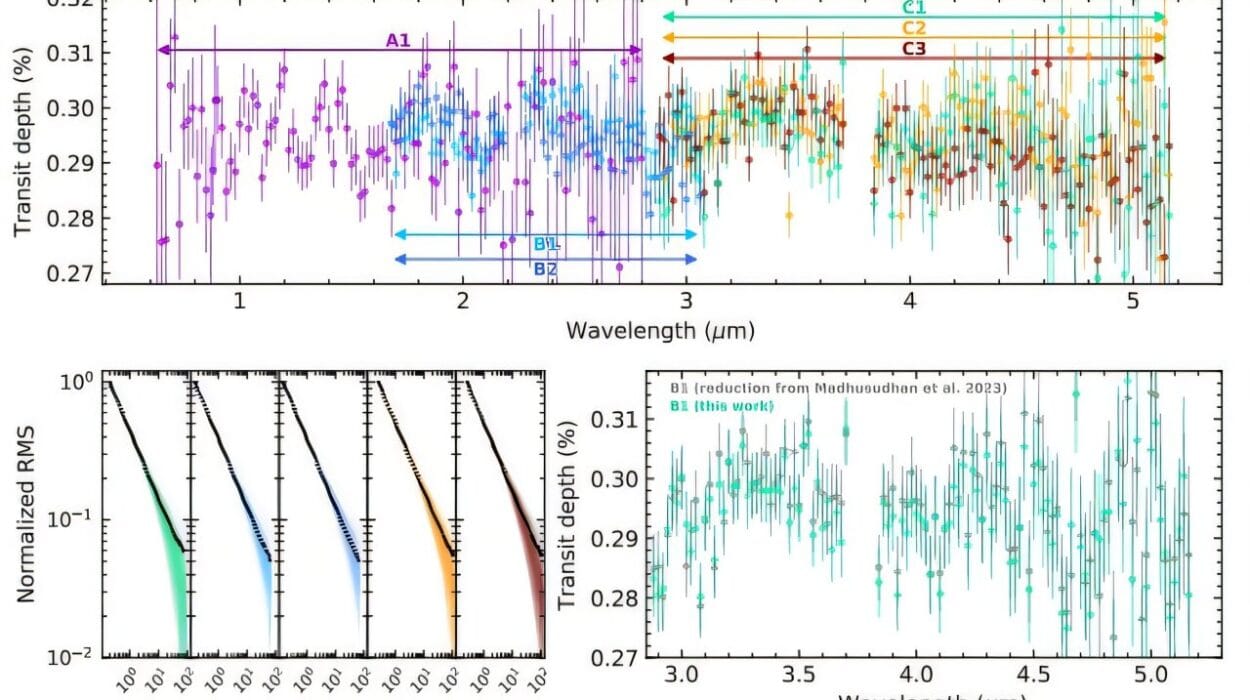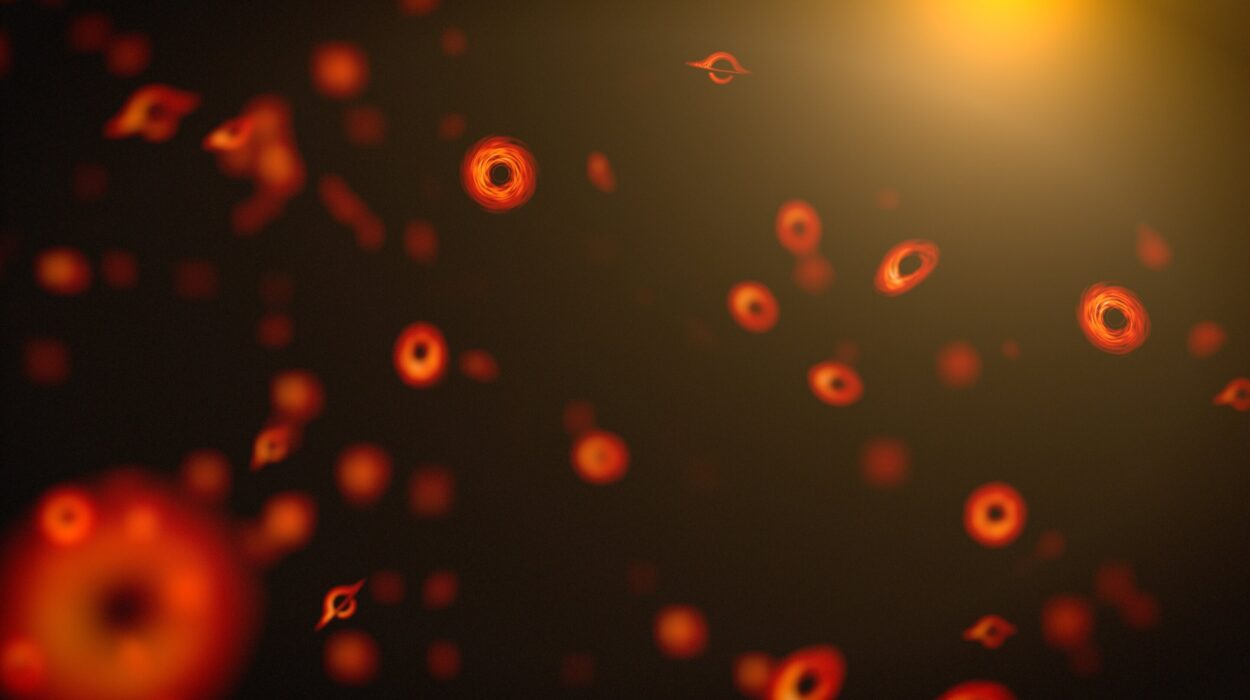High atop the summit of Maunakea on Hawaiʻi Island, a revolution in astronomy is quietly unfolding. Armed with one of the world’s most powerful optical telescopes, scientists at the W. M. Keck Observatory have done something once thought impossible: they’ve listened to the subtle music of a star previously deemed too quiet to be heard. The star in question—HD 219134, a relatively cool orange-colored dwarf just 21 light-years away—is now the centerpiece of a discovery that is shaking the foundations of how we understand stellar structure and aging.
Using Keck’s newest marvel, the Keck Planet Finder (KPF), astronomers have captured minute oscillations, or vibrations, within this quiet star’s outer layers. These tremors are not just celestial curiosities—they are echoes of the star’s internal structure and history, reverberating across light-years. It’s a moment that opens an unprecedented window into the interior lives of stars and lays the groundwork for more accurate models of stellar evolution.
The Music of the Stars
Stars, like musical instruments, are resonant. Their gassy envelopes ring with vibrations triggered by internal forces, and these vibrations ripple through their structure. The field of asteroseismology—literally “starquakes”—allows astronomers to detect these internal oscillations and use them to deduce the star’s properties. Each oscillation tells a story: about mass, about size, about internal temperature and composition, and—most profoundly—about age.
“We’re listening to the heartbeat of a star,” explained Yaguang Li, lead author of the new study and a researcher at the University of Hawaiʻi at Mānoa. “Each oscillation is like a musical note, and together they form a kind of symphony that tells us everything from how the star was born to what stage of life it’s currently in.”
Historically, such stellar “songs” have only been detectable in stars hotter and more massive than the Sun, using space-based observatories like NASA’s Kepler and TESS. These telescopes measure minute changes in a star’s brightness caused by surface vibrations. But HD 219134, being smaller and cooler, was too subtle a singer—its brightness variations too faint to register from space.
Hearing the Unheard: The Keck Planet Finder Advantage
This is where the Keck Planet Finder makes its entrance, not as a telescope per se, but as a high-precision spectrograph—the most advanced of its kind—designed to detect the slightest changes in a star’s motion. Instead of watching the star’s brightness flicker, KPF listens for Doppler shifts in its light. As the star’s surface oscillates, it moves minutely toward and away from Earth, ever so slightly shifting the wavelength of the light it emits.
Over four consecutive nights, the KPF captured over 2,000 high-resolution velocity readings of HD 219134. These observations were so finely tuned that they could detect the gentle pulsations of the star—fluctuations on the scale of mere centimeters per second. It was like catching the vibration of a violin string from miles away.
“This is the first time we’ve been able to determine the age and radius of a cool star using asteroseismology and ground-based instruments,” said Li. “KPF’s fast readout mode is what makes this possible—it’s like turning up the volume on a whisper until it becomes a chorus.”
A Window into the Past: The Star’s Ancient Heartbeat
HD 219134 is more than just a nearby stellar neighbor—it’s a time capsule. Thanks to the newly detected oscillations, researchers have now calculated that the star is 10.2 billion years old. That makes it more than twice the age of our Sun and places it among the oldest known stars still burning steadily on the main sequence.
This age determination carries profound implications. One of the key methods astronomers use to estimate a star’s age is gyrochronology, which calculates stellar age based on rotation speed. Young stars spin quickly, but over time, they lose angular momentum—slowing down like a toy top winding to a stop. However, this theory hits a snag when applied to older stars like HD 219134, whose spin appears to stall, defying the predictions of gyrochronology.
Thanks to asteroseismology, scientists now have a precise anchor point at the far end of the stellar age spectrum. It provides a critical calibration for rotation-based age models, allowing for better estimations across the entire stellar lifespan.
“This is like finding a long-lost tuning fork for stellar clocks,” said Li. “With it, we can fine-tune our models and finally understand how stars really age after billions of years.”
A Star Smaller Than It Should Be?
Just when astronomers thought they were getting answers, HD 219134 posed another puzzle. Interferometric measurements—which rely on using multiple telescopes to estimate a star’s size—had previously pegged the star’s radius at a specific value. But the asteroseismic data from KPF told a different story. The star, according to its oscillations, is about 4% smaller than previously believed.
That might not sound like much, but in astrophysics, where precision is paramount, a 4% difference is significant. The discrepancy raises important questions about our current models of stellar structure, particularly for cooler stars. Could magnetic activity be distorting the outer layers? Are our assumptions about atmospheric opacity wrong? Or could it be a deeper, structural mystery waiting to be unraveled?
“It challenges our understanding of how these stars are built,” said Li. “There may be hidden variables in stellar modeling that we haven’t yet accounted for, especially in stars that don’t behave exactly like our Sun.”
A Family of Planets in a New Light
HD 219134 doesn’t live in cosmic isolation—it hosts a complex planetary system, including at least five planets, two of which are rocky, super-Earth-sized bodies that transit across its face. By refining the size of the host star, astronomers were also able to recalibrate the estimated sizes and densities of these planets. The result? Confirmation that these exoplanets are likely terrestrial, with Earth-like compositions and solid surfaces.
This refinement isn’t just academic. Knowing a planet’s density is critical in determining its habitability. A planet with the mass of Earth but the radius of Neptune, for instance, would be a gaseous world, not a rocky one. The new data from KPF shows that the planets orbiting HD 219134 are dense enough to support solid, potentially life-friendly surfaces.
“This is a big step forward in our ability to characterize exoplanets,” said Daniel Huber, a co-author of the study. “Understanding the host star is key to understanding the worlds that orbit it. And now we know this system is even more intriguing than we thought.”
Listening for Life in the Universe
Perhaps the most tantalizing implication of this discovery lies not in what we’ve learned, but in what it makes possible. With KPF’s ability to “listen” to previously silent stars, astronomers can now bring hundreds, perhaps thousands, of similar stars into focus. These are the stars that will serve as the hosts for the next generation of exoplanet studies.
NASA’s upcoming Habitable Worlds Observatory and other space-based missions will rely on precise stellar data to locate, observe, and understand planets in the habitable zones of distant systems. Instruments like KPF are laying the groundwork now, helping to identify which stars are worth watching—and which planets may be the most likely candidates for life.
“When we find life on another planet, we’re going to want to know how long it’s been there,” Huber said. “That answer will come from understanding the star. Its age, its stability, its song. Stellar sounds will be one of our most powerful tools in the search for extraterrestrial life.”
A Symphony Just Beginning
The discovery of oscillations in HD 219134 is more than a technical milestone—it’s the dawn of a new era in stellar science. It proves that with the right tools and enough precision, we can pierce the silence of even the most quiet stars. And in doing so, we can learn not just about the stars themselves, but about the planets they host, the histories they’ve witnessed, and the cosmic symphony they’ve been quietly composing for billions of years.
As astronomers continue to refine their instruments and turn their gaze to other quiet stars nearby, one thing is clear: the universe has many more songs to sing—and we’ve only just begun to listen.
Reference: Yaguang 亚光 Li 李 et al, K Dwarf Radius Inflation and a 10 Gyr Spin-down Clock Unveiled through Asteroseismology of HD 219134 from the Keck Planet Finder, The Astrophysical Journal (2025). DOI: 10.3847/1538-4357/adc737






